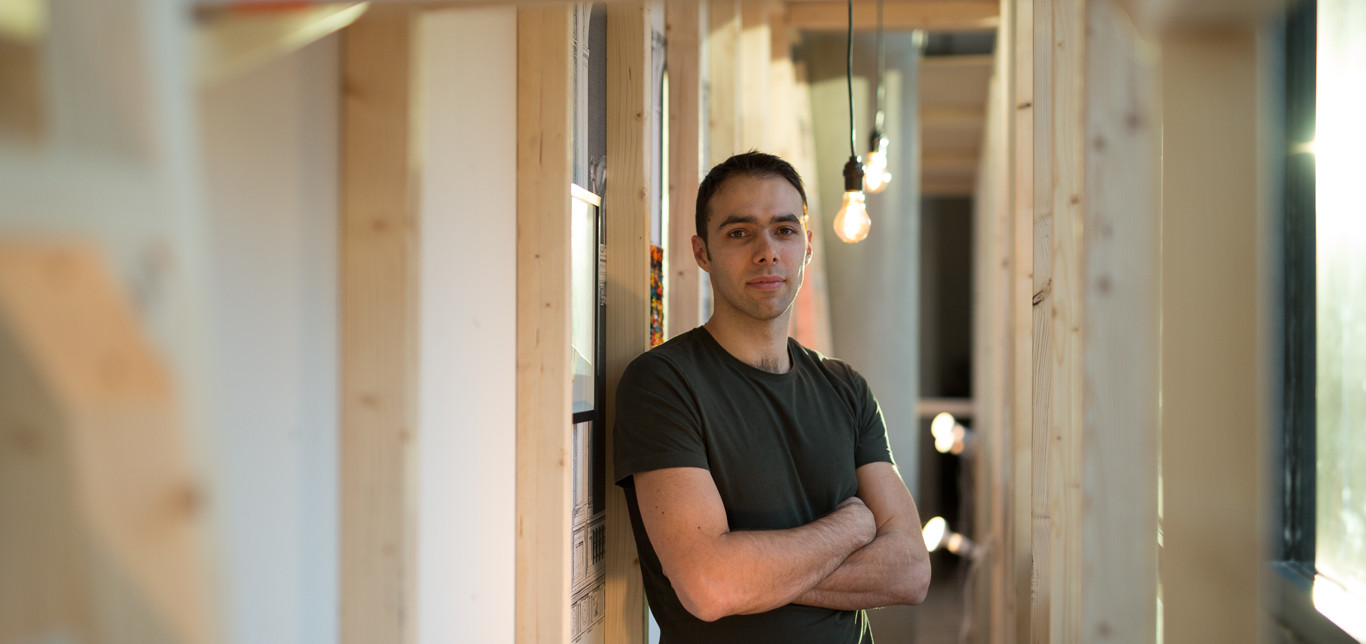WE TALK TO TIM A SHAW
ABOUT HIS PRACTICE, UNDERSTANDING ART MATERIALS AND HOW ART CAN IMPACT MENTAL HEALTH
Tell us a bit about your practice as an artist.
I’m a multimedia artists and I make installations, light-sculptures, paintings and mixed media assemblages. Much of my work explores moments of transition; in-between states of bodies and fleshy masses as they transform, evolve and heal.
Who inspires you?
I’m particularly inspired by the occupational therapists on the units we’ve been working with for our Hospital Rooms projects. We learn so much from the way they work with the service users to make each day meaningful.
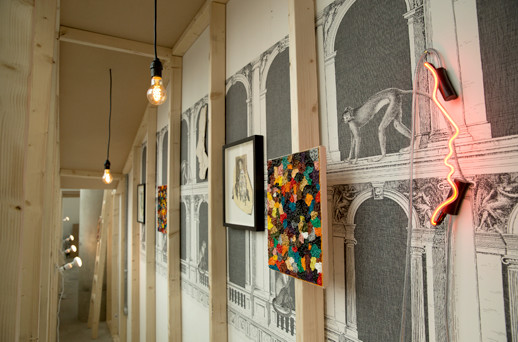
In your artistic practice you produce drawings, paintings, installations and assemblages using varied media – what draws you to a particular medium?
I am often working towards a particular installation where all of these media are a part of the whole concept. I like having the opportunity to build an environment to show a number of individual paintings and sculptures, where these objects then become a part of a whole piece.
For the portraits featured in ‘Refuge’ currently on show at Griffin Gallery you rendered the paintings in thick impasto, compartmentalising the various colours used in distinct cells which echoes the theme of the exhibition. Can you tell us more about this?
The paintings are closely observed, almost in quite a claustrophobic way, picking out the subjects’ features and then relaying this in accentuated colours to the canvas. The result can at first seem quite abstracted, and the small scale of many of the paintings (which are roughly head-size) make them quite close and intimate.
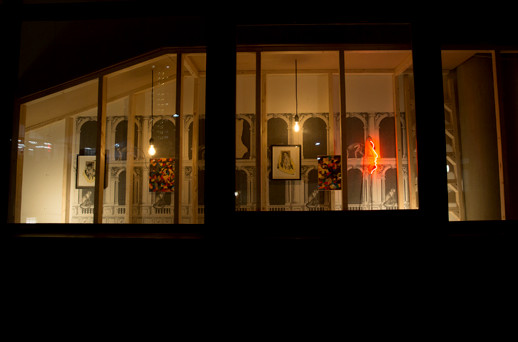
Your artwork is often paired with large-scale installation such as ‘Refuge’ at Griffin Gallery and ‘Pierrot Studio’ at Display Gallery – do you prefer for your work to be seen in a particular setting?
I try to make my installations immersive spaces that have an atmosphere separate from the gallery space, and manipulate the way the individual works can be seen within them. For ‘Pierrot Studio’ I constructed a timber frame replica of Arnold Schoenberg’s study, based upon photographs of the composer at work. Rather than presenting a fixed piece of architecture, the installation was instead a psychic, imagined shell, with a number of tableaus that included re-imaginings of Schoenberg’s own portraits, and musicians playing a piece by composer Ewan Campbell, who I collaborated with. For ‘Refuge’ I accentuated the claustrophobic nature of the Griffin Gallery Perimeter Space by using a ramp to give the feeling of diminishing space. Underneath the ramp is a refuge that contains a number of the impasto paintings that act like characters that populate this sanctuary.
The use of taxidermy fish in some of your work references still life, but you often bring these artworks to life using lights and neon. Why do you use these materials, and what kind of reactions do you hope they will provoke?
Illuminating something can be revealing and a way of showing vulnerability. Electrifying a lifeless fish, for example, can be seen as revolting and funny, especially as the light pieces are intended to also have a life as a functional domestic appliance.
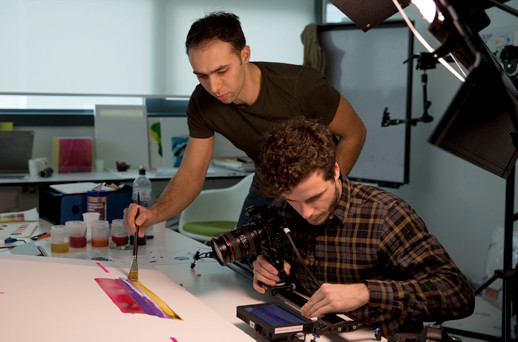
TEACHING AT COLART
Alongside creating artwork for his personal practice, Shaw is also a great teacher and support for the arts. He has been working with Colart for a number of years teaching students through The Fine Art Collective and teaching subscribers to the Winsor & Newton masterclasses how to use our products.
You often teach people how to use our products in very specific ways – does that ever affect how you choose to create art?
I think it is great to be able to have lots of different techniques available to you. Even though most artists won’t use every technique and every medium, knowing what’s possible and available opens lots of creative doors.
How important is it for you to use the right tools and products to create your artwork?
Although lots of brilliant artists use cheap and everyday materials to make their work, it is still useful to have an understanding of what makes a high quality material or tool. It’s important to me that the materials I use are permanent, lightfast and archival.
Find out more about The Fine Art Collective on our Community page.
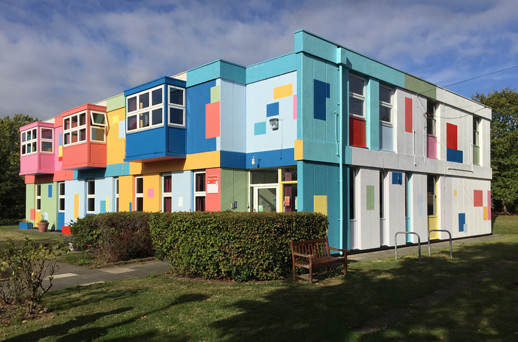
HOSPITAL ROOMS
Last year, Shaw co-founded Hospital Rooms with curator Niamh White, a project introducing site-specific, museum quality artworks to mental health wards. During this project Shaw also ran workshops to teach service users how to make art.
How did you and Niamh come up with the concept for Hospital Rooms?
After visiting a close friend in a mental health unit I was shocked by how cold, clinical and impersonal the environment was, which couldn’t be conducive to recovery and better wellbeing. Niamh and I wanted to approach putting art into a mental health unit and we approached the current medical director of South West London & St George’s NHS Trust, who took a chance on us. We wanted to have a co-production method of working where, rather than just putting pictures on the walls, we would commission artists to make site specific works for a particular unit after meeting with service users and staff and seeing the spaces for themselves.
What kind of reaction did you get to the artwork and the workshops?
The response has been overwhelmingly positive. As an example, Gavin Turk’s ‘Egg Balance’, a vinyled balancing eggs motif in a room painted in Duck Egg Blue, has been very popular and has stimulated fascinating discussions between service users, staff, artists and ourselves. We have encountered so many creative people during our projects so far, and all of our workshops at the Recovery College at SWLSTG have been fully booked. The work made by service users has been fantastic. We were able to put on an exhibition of images of one of our projects at Griffin Gallery (as the public wouldn’t have a chance to see the work for themselves), and we displayed 60 artworks made by service users during our workshops. On the final day of the exhibition several service users were able to visit the exhibition with staff, which was a great experience. We feel so lucky to have the support of Colart, who have supplied all the paint and materials for our workshops and artists – it makes such a difference to be able to supply all the attendees with great quality art materials. We also couldn’t have completed our Recovery College project without the help of all the amazing volunteers from Colart HQ.
What are your plans for the future of Hospital Rooms?
We are now a registered charity and we have a number of projects lined up for 2017 and 2018. We’re excited to get started on the next projects, and we have some incredible artists working on them. We have also partnered with Chispa Global, who will be conducting Participatory Action Research into the effects of the installations on the service users and staff, so that we can see what works and what can be improved in our approach. We’re hoping to be able to improve the environments in many more mental health units in the coming years, and help to encourage creative activity within them.
Please visit the Hospital Rooms website for more information.
